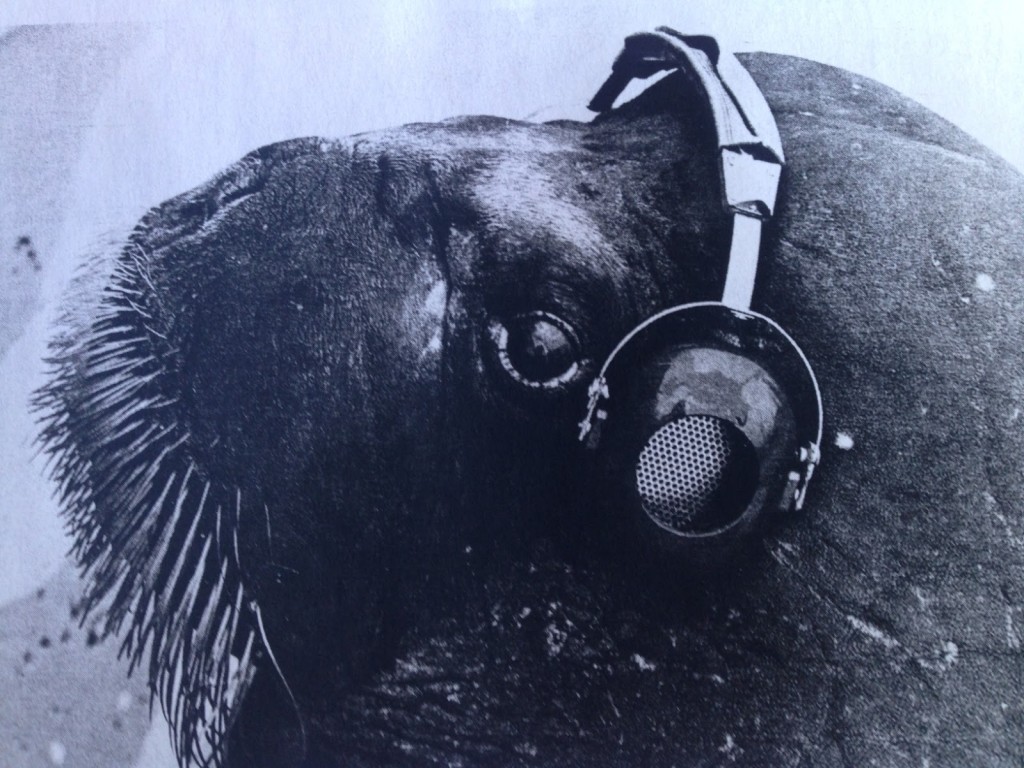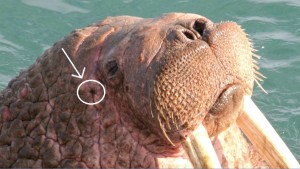Ben Histand of the Alaska Department of Fish and Game and a manager of Round Island and its Walrus Cams lays down the groove on walrus hearing.
“Walruses are big animals, they like to gather in large groups, and they can be very vocal. Viewers of explore’s Walrus Camera know that a beach full of grunting, bellowing, chiming walruses can be a very noisy place. So how do the walruses who aren’t actively making noise manage to get any sleep?
In the 1990s, researchers in the Netherlands (R. A. Kastelein and others) studied walrus ears to see how they’re structured and how they function as the animals swim, dive, feed, and rest. At one point the researchers used a set of headphones to study the hearing sensitivity of captive walruses, which led to the amazing photo above.
The researchers found that walruses have muscles which allow them to close off their ear opening. This certainly comes in handy while diving and foraging, as it helps protect their ears from pressure changes. The researchers also speculated that walruses might be able to close off their ears voluntarily when they’re out of the water. This would essentially give them built in earplugs they could use when their neighbors are getting too rowdy.
While watching walruses, you’ll have to look very closely to see their ears, especially on the mature males that fill most of the beach at Round Island. This photo shows the location of the ear opening, hidden among the creases of this animal’s weathered skin.”




